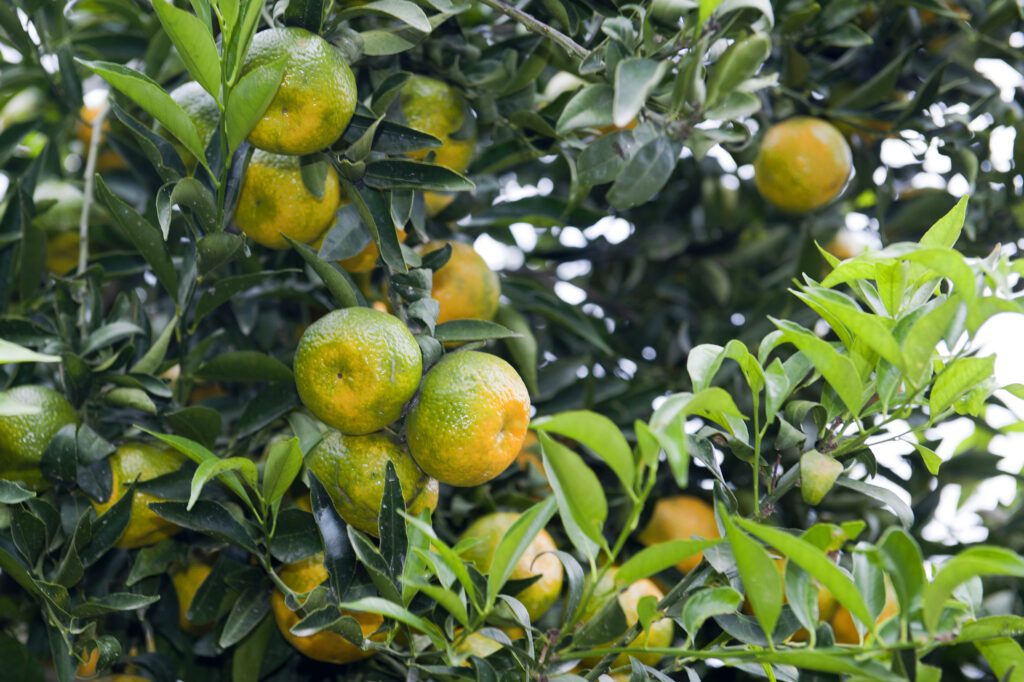Researchers Try to Crack Greening With Comparative Genomics
by HEATHER MACHOVINA
Candidatus Liberibacter asiaticus (CLas) is the bacterium responsible for causing the devastating Huanglongbing (HLB or citrus greening) disease. Infected trees have poor vegetative growth, fruit drop, low fruit quality, and tree decline. Scientists are not able to cultivate CLas on its own in a laboratory setting, causing a significant scientific challenge toward effective HLB management. Because scientists can’t isolate the bacterium in culture, they aren’t able to get comprehensive analyses of its functional genomics. This would be done by transferring a clean culture of CLas from the lab to either insect or plant hosts to establish the relationships between the bacterium and disease in citrus. Furthermore, the characterization of host-pathogen interactions and effective screening of antibacterial compounds are not adequate, leaving so much to be learned about the host/vector/pathogen interactions on this long road to more and better HLB-fighting methods.
Comparative genomics has provided some preliminary insight into the metabolic processes of this citrus greening bacterium. Metabolic processes refer specifically to the breakdown of food and transforming it into energy. University researchers around the country have been working together to find the link between observable metabolic traits and pathogenic traits between CLas and its hosts.
James Borneman, professor in the Department of Microbiology and Plant Pathology at UC Riverside, and collaborators (Karsten Zengler, a systems biologist at UC San Diego, and Georgios Vidalakis, a plant pathologist at UC Riverside) are constructing metabolic models of the three HLB pathosystem organisms — pathogen, host citrus, and insect vector. These metabolic models are mathematical representations of functioning cells that include the chemical reactions needed to use nutrients as a source of energy. They are like road maps, showing you all the biological processes of organisms, and how they work together.
“They also show you which molecular pathways, if blocked, will kill the pathogen,” says Borneman. These models are expected to enable the discovery of novel antibacterial molecules, HLB tolerant citrus, and strategies to kill or disarm the Asian citrus psyllid vector.
Because these models also include the reactions associated with nutrient usage of HLB, they are expected to be used to increase the growth rate of citrus at different stages of the engineering process, potentially accelerating the creation of HLB tolerant/ resistant citrus. This work will use the newly constructed citrus metabolic model described above.
“This line of research is supported by prior work with a metabolic model of rice that accurately predicted growth rates under various environmental conditions and nutrient amendments,” says Borneman.
These new models show control methods that were previously not available. The research team reconstructed genome-scale metabolic models for six CLas strains, including a model of the closest related culturable microorganism, to the unculturable HLB. They identified 94 enzymes that the HLB bacterium needs for survival, providing researchers with new targets for the development of new and more effective treatments. Furthermore, they discovered metabolites, the substance necessary for metabolic processes to occur, that are required for this pathogen to grow. This could help lead scientists to successfully cultivate CLas in a laboratory setting, allowing more efficient research to take place. Results also showed unique metabolic traits, as well as strain-specific interactions between CLas and its hosts, laying the foundation for the development of model-driven citrus greening management strategies.
“Given the bountiful examples of metabolic models being used to predict, design, and subsequently engineer organisms,” Borneman says, “this project has the potential to create effective management strategies targeting all three components of the pathosystem.”
“The research is looking as promising as anything we have seen,” says Les Dunson, president of Dunson Harvesting Inc. located in Winter Haven.
“I am very hopeful that the research provides a solution for HLB.”
Basic HLB management strategies are based on the use of HLB-free nursery stock, inoculum reduction by removing HLB-affected trees, and insecticide treatments for psyllid control. Don’t forget the various combinations of citrus rootstocks and interstocks, antibiotics, brassinosteroids, thermotherapy, and nano emulsion technology that have been promoted, too. However, none of these options are proven to be very successful, economically viable, or environmentally sustainable, making HLB a major threat to the citrus industry worldwide. CLas infections have been documented across most citrus-producing areas in Asia, the Americas and Africa, and are projected to spread naturally via the psyllid host.
Identifying these potential, essential genes of CLas can lead to the development of HLB management strategies by designing molecules that specifically block or inhibit these gene products. Borneman and team found genetic targets in metabolic pathways that, when inhibited, may block the growth of CLas and prevent the spread of this destructive disease. The systems biology tools presented in their research will allow for the simulation of thousands of conditions. By applying environmental or genetic constraints, vulnerabilities of CLas can be revealed across many environments, which can improve and guide future research and management efforts to combat citrus greening. Significant progress has been made toward understanding the interactions between CLas and its hosts. Systems biology tools can help to further unveil metabolic mechanisms associated with HLB initiation and progression, as well as to identify targets in CLas that can be used to develop HLB management strategies.
“Microbes almost always adapt to control measures,” Borneman explains. The team will most likely have to study all three components of HLB—bacterium, vector, and plant—to find a permanent solution. “We expect that this multi=organism modeling endeavor will provide new insights into the mechanisms underlying this disease, which will lead to effective and sustainable Huanglongbing management strategies,” Borneman said.
I’m sure most citrus growers will agree that continued research is imperative to finding more sustainable solutions for HLB.
“The sooner the better, as it continues to be very challenging for growers to survive in the current HLB environment,” Dunson says.

